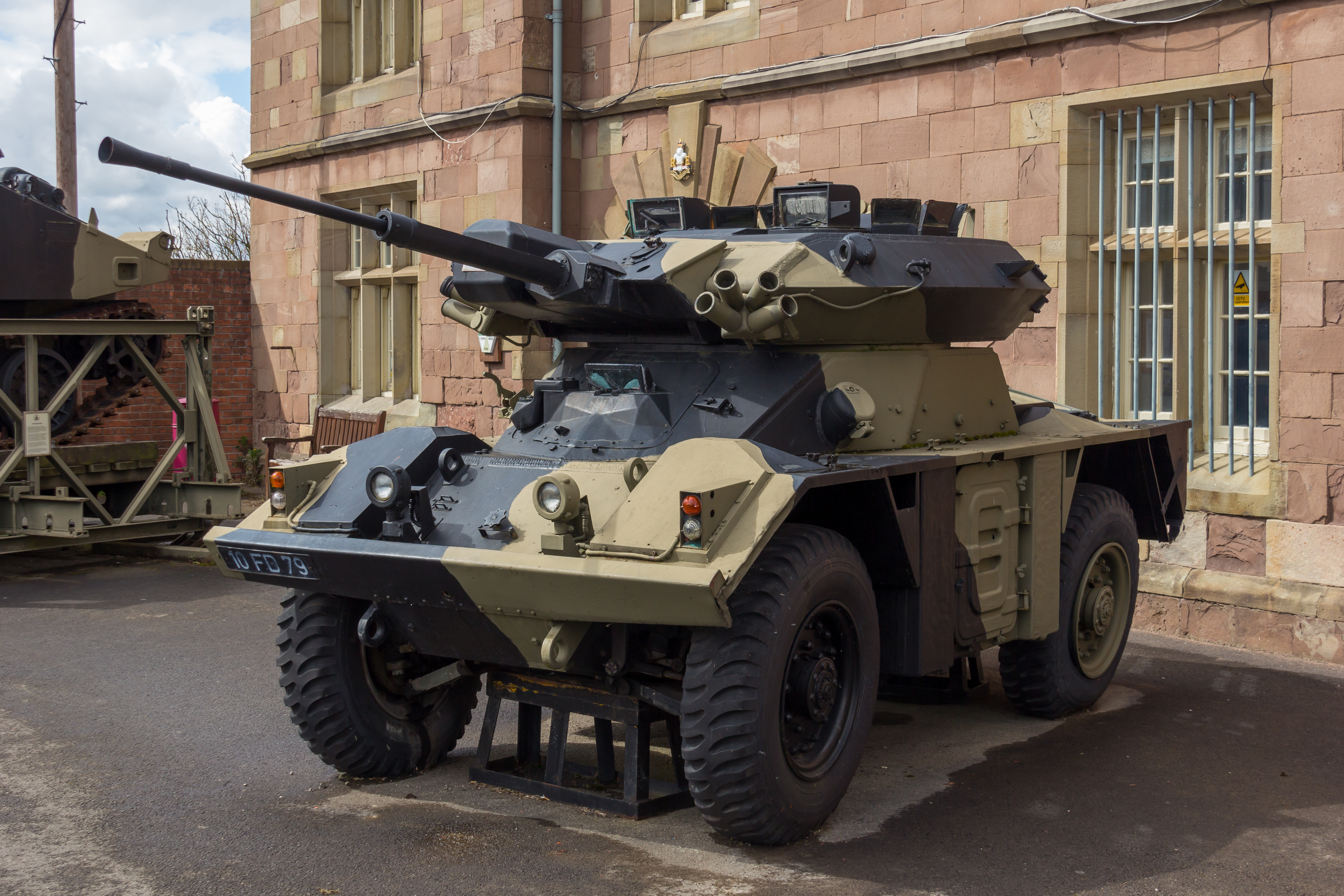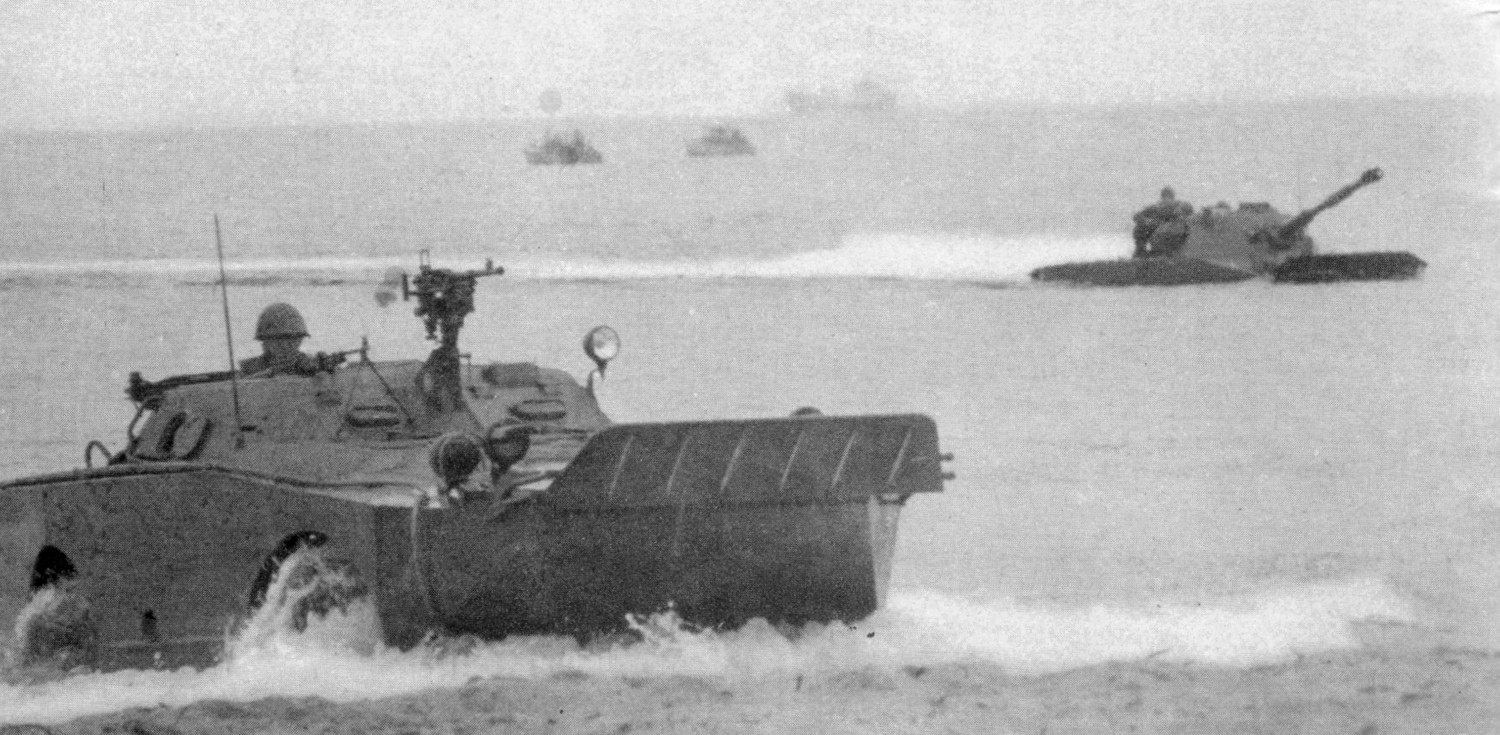|
Scout Car
A scout car is a light wheeled armored military vehicle, purpose-built and used for passive reconnaissance. Scout cars are either unarmed or lightly armed for self-defense, and do not carry large caliber weapons systems. This differentiates them from other reconnaissance vehicles and wheeled armoured fighting vehicles that may fulfill a similar mission but also possess much heavier armament. Scout cars are designed for carrying out observation and remaining undetected, while avoiding contact with the enemy. Armies which adopted the concept were likelier to place an emphasis on reconnaissance by stealth, unlike others which preferred more heavily armoured reconnaissance vehicles, designed to fight to obtain information if necessary. History The term "scout car" first entered widespread use in the 1930s as an official United States Army designation for any wheeled armored vehicle developed specifically for reconnaissance. Following the US entry into World War II, US Army staff clar ... [...More Info...] [...Related Items...] OR: [Wikipedia] [Google] [Baidu] |
BRDM-2 (1964) Owned By James Stewart Pic7
The BRDM-2 (''Boyevaya Razvedyvatelnaya Dozornaya Mashina'', Боевая Разведывательная Дозорная Машина, literally "Combat Reconnaissance/Patrol Vehicle") is an amphibious armoured scout car used by states that were part of the Soviet Union and its allies. It was also known under the designations BTR-40PB, BTR-40P-2 and GAZ 41-08. This vehicle, like many other Soviet designs, has been exported extensively and is in use in at least 38 countries. It was intended to replace the older BRDM-1, and has improved amphibious capabilities and better armament compared to its predecessor. History After a few years of use by the Soviet Army, the limitations and drawbacks of the BRDM-1 became obvious. The vehicle had no turret and to operate the armament the gunner had to open a hatch and expose himself to enemy fire. The vehicle was not fitted with an NBC protection system, and had no night vision equipment by default. The vehicle also lacked any kind of speci ... [...More Info...] [...Related Items...] OR: [Wikipedia] [Google] [Baidu] |
Fox Armoured Reconnaissance Vehicle
The FV721 Fox Combat Vehicle Reconnaissance (Wheeled) (CVR(W)) was a 4 × 4 armoured car manufactured by ROF Leeds, deployed by the British Army as a replacement for the Ferret scout car and the Saladin armoured car. The Fox was introduced into service with B Squadron, 1st Royal Tank Regiment (Aliwal Barracks, Tidworth) in 1975 and withdrawn from service 1993–94. Development of the Fox began in 1965 and the following year the Daimler company of Coventry, which was building the Ferret scout car at the time, was awarded a contract to build 15 prototype vehicles. The first was completed in November 1967 and the last in April 1969. User trials began in 1968 and the first official announcement concerning the Fox was made in October 1969. The following year the Fox was accepted for service with the British Army and a production order was placed with Royal Ordnance Leeds. Production began in 1972 and the first vehicle was completed in May 1973. Production of the Fox has been com ... [...More Info...] [...Related Items...] OR: [Wikipedia] [Google] [Baidu] |
BMP-2
The BMP-2 (''Boyevaya Mashina Pekhoty'', , literally "combat machine/vehicle (of the) infantry") is an amphibious infantry fighting vehicle introduced in the 1980s in the Soviet Union, following on from the BMP-1 of the 1960s. Development history Although the BMP-1 was a revolutionary design, its main armament, the 2A28 Grom and the 9S428 ATGM launcher capable of firing 9M14 Malyutka (NATO: AT-3A Sagger A) and 9M14M Malyutka-M (NATO: AT-3B Sagger B) ATGMs, quickly became obsolete. Therefore, the Soviet Union decided to produce an updated and improved version of the BMP-1. The main emphasis was put on improving the main armament. In 1972, work got under-way to develop an improved version of the BMP-1. During its combat debut in the Yom Kippur War, Egyptian and Syrian BMPs proved vulnerable to .50 calibre machine-gun fire in the sides and rear, and to 106 mm M40 recoilless rifles. The 2A28 Grom, 73 mm gun proved inaccurate beyond 500 metres, and the 9M14 Malyut ... [...More Info...] [...Related Items...] OR: [Wikipedia] [Google] [Baidu] |
BMP-1
The BMP-1 is a Soviet amphibious tracked infantry fighting vehicle, in service 1966–present. BMP stands for ''Boyevaya Mashina Pyekhoty 1'' (russian: link=no, Боевая Машина Пехоты 1; БМП-1), meaning "infantry fighting vehicle, 1st serial model". The BMP-1 was the first mass-produced infantry fighting vehicle (IFV) of the Soviet Union. It was called the M-1967, BMP and BMP-76PB by NATO before its correct designation was known. The Soviet military leadership saw any future wars as being conducted with nuclear, chemical and biological weapons. A new design, like the BMP, combining the properties of an armored personnel carrier (APC) and a light tank would allow infantry to operate from the relative safety of its armoured, radiation-shielded interior in contaminated areas and to fight alongside it in uncontaminated areas. It would increase infantry squad mobility, provide fire support to them, and also be able to fight alongside main battle tanks. The B ... [...More Info...] [...Related Items...] OR: [Wikipedia] [Google] [Baidu] |
BRDM-2
The BRDM-2 (''Boyevaya Razvedyvatelnaya Dozornaya Mashina'', Боевая Разведывательная Дозорная Машина, literally "Combat Reconnaissance/Patrol Vehicle") is an amphibious armoured scout car used by states that were part of the Soviet Union and its allies. It was also known under the designations BTR-40PB, BTR-40P-2 and GAZ 41-08. This vehicle, like many other Soviet designs, has been exported extensively and is in use in at least 38 countries. It was intended to replace the older BRDM-1, and has improved amphibious capabilities and better armament compared to its predecessor. History After a few years of use by the Soviet Army, the limitations and drawbacks of the BRDM-1 became obvious. The vehicle had no turret and to operate the armament the gunner had to open a hatch and expose himself to enemy fire. The vehicle was not fitted with an NBC protection system, and had no night vision equipment by default. The vehicle also lacked any kind of s ... [...More Info...] [...Related Items...] OR: [Wikipedia] [Google] [Baidu] |
BRDM-1
The BRDM-1 (''Bronirovannaya Razvedyvatelnaya Dozornaya Mashina'', Бронированная Разведывательная Дозорная Машина, literally "armored reconnaissance/patrol vehicle") is a Soviet amphibious armored scout car. It was the first purpose-built Soviet reconnaissance vehicle to enter service since the BA-64 and was built on the chassis and drive train of the BTR-40 armored personnel carrier. It is the world's first mass-produced combat vehicle of its class. The primary advantage of the BRDM-1 at the time of its introduction was its amphibious capability, which was the main shortcoming associated with its BTR-40 counterpart. Another unique feature of the vehicle's design were two pairs of chain-driven auxiliary wheels, which could be lowered to provide additional traction on muddy terrain. The BRDM-1 was manufactured from 1957 to 1966, at which time 10,000 had entered service with the Soviet Union and its military allies around the world. It w ... [...More Info...] [...Related Items...] OR: [Wikipedia] [Google] [Baidu] |
BA-64
The BA-64 (''БА-64'', from ''Bronirovaniy Avtomobil'', literally "armoured car") was a Soviet four-wheeled armoured scout car. Built on the chassis of a GAZ-64 or GAZ-67 jeep, it incorporated a hull loosely modeled after that of the Sd.Kfz. 221. The BA-64 was developed between July and November 1941 to replace the BA-20 then in service with armoured car units of the Red Army. Cheap and exceptionally reliable, it would later become the most common Soviet wheeled armoured fighting vehicle to enter service during World War II, with over 9,000 being manufactured before production ended. The BA-64 represented an important watershed in Soviet armoured car technology, as its multi-faceted hull gave its crew superior protection from small arms fire and shell fragments than the BA-20. BA-64s also possessed a much higher power-to-weight ratio and the placement of their wheels at the extreme corners of the chassis resulted in exceptional manoeuvrability. Following the adoption of the BT ... [...More Info...] [...Related Items...] OR: [Wikipedia] [Google] [Baidu] |
BA-20
The BA-20 (russian: Broneavtomobil 20, italic=yes) was an armored car developed in the Soviet Union in 1934. It was intended to replace the FAI and its field trials were completed in 1935. The BA-20 was then used in the early stages of World War II. Design and production The BA-20 armored car was developed in 1934 for use by HQ staffs, reconnaissance and communications units. It was derived from the civilian GAZ-M1 car using its chassis, which was itself a modified version of a Ford design, produced by the Nizhny Novgorod-based vehicle manufacturer GAZ. Full production of the BA-20 started in 1935. The chassis was built at the Nizhny Novgorod factory; the body was built at the Vyksinskiy plant, where final assembly of the BA-20 occurred as well. Service The principal use of the BA-20 was as a scout vehicle. The BA-20's tires were designed to be resistant to bullets and shrapnel by the simple expedient of filling them with spongey rubber. A variant, the BA-20ZhD, could trave ... [...More Info...] [...Related Items...] OR: [Wikipedia] [Google] [Baidu] |
Red Army
The Workers' and Peasants' Red Army (Russian language, Russian: Рабо́че-крестья́нская Кра́сная армия),) often shortened to the Red Army, was the army and air force of the Russian Soviet Federative Socialist Republic and, after 1922, the Union of Soviet Socialist Republics. The army was established in January 1918. The Bolsheviks raised an army to oppose the military confederations (especially the various groups collectively known as the White Army) of their adversaries during the Russian Civil War. Starting in February 1946, the Red Army, along with the Soviet Navy, embodied the main component of the Soviet Armed Forces; taking the official name of "Soviet Army", until its dissolution in 1991. The Red Army provided the largest land warfare, land force in the Allied victory in the European theatre of World War II, and its Soviet invasion of Manchuria, invasion of Manchuria assisted the unconditional surrender of Empire of Japan, Imperial Japan. ... [...More Info...] [...Related Items...] OR: [Wikipedia] [Google] [Baidu] |
Federal University Of Juiz De Fora
The Federal University of Juiz de Fora ( pt, Universidade Federal de Juiz de Fora, UFJF) is a public research university in Brazil. Throughout its over 50 years of existence, the university has undergone significant growth, strengthening the quality of undergraduate and graduate education while maintaining its role as an agent of community development. History UFJF was established in 1960 by an act of Brazilian President Juscelino Kubitscheck. At that time, colleges functioning in the city of Juiz de Fora were officially integrated by the government to constitute a university. In the earlier years, the courses offered were Medicine, Engineering, Economic Science, Law, Pharmacy and Dentistry. Later, the courses of Geography, Languages & Literature, Philosophy, Biological Sciences, Social Science and History were also opened. The campus was built in 1969 and the courses offered under licensure were distributed among different campus units. The Social Communication (Journalism) cou ... [...More Info...] [...Related Items...] OR: [Wikipedia] [Google] [Baidu] |
Panhard AML
The Panhard AML (''Auto Mitrailleuse Légère'', or "Light Machine Gun Car") is an armoured car with reconnaissance capability. Designed on a lightly armoured 4×4 chassis, it weighs an estimated 5.5 tonnes, and is thus suitable for airborne deployment. Since 1959, AMLs have been marketed on up to five continents; several variants remained in continuous production for half a century. These have been operated by fifty-four national governments and other entities worldwide, seeing regular combat. The AML-245 was once regarded as one of the most heavily armed scout vehicles in service, fitted with a low velocity DEFA D921 90 mm (3.54 in) rifled cannon firing conventional high explosive and high explosive anti-tank shells, or a 60 mm (2.36 in) breech loading mortar with 53 rounds and dual 7.5mm MAS AA-52 NF-1 machine guns with 3,800 rounds, all mounted coaxially in the turret. An AML is capable of destroying targets at 1,500 meters with its D921 main gun. In this ... [...More Info...] [...Related Items...] OR: [Wikipedia] [Google] [Baidu] |








